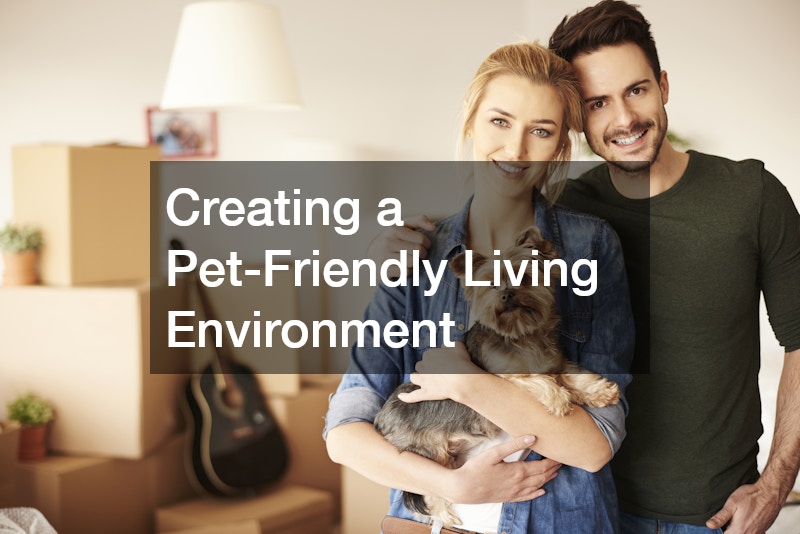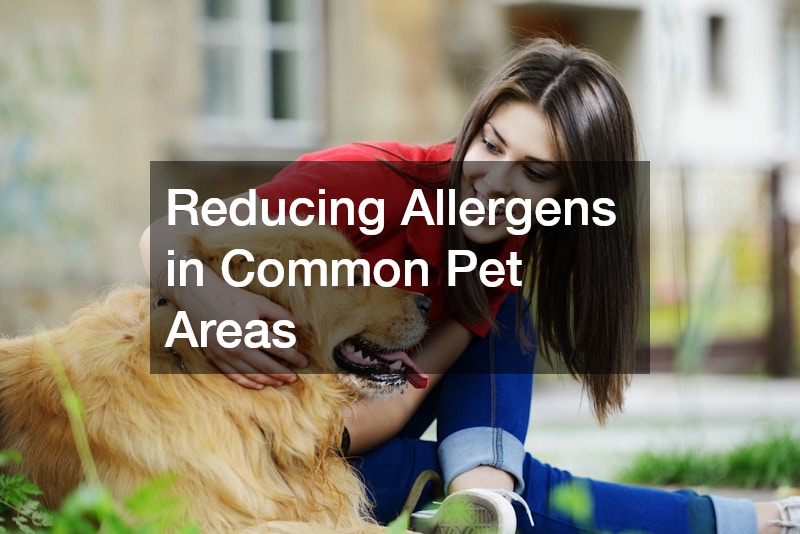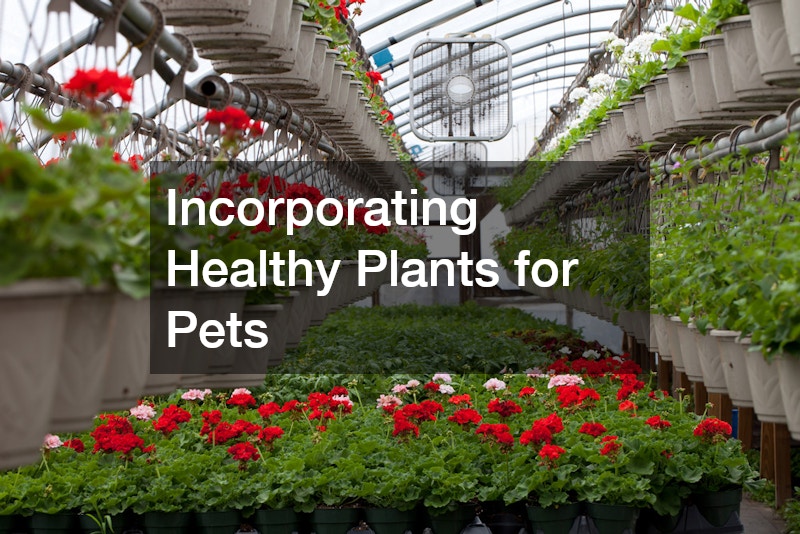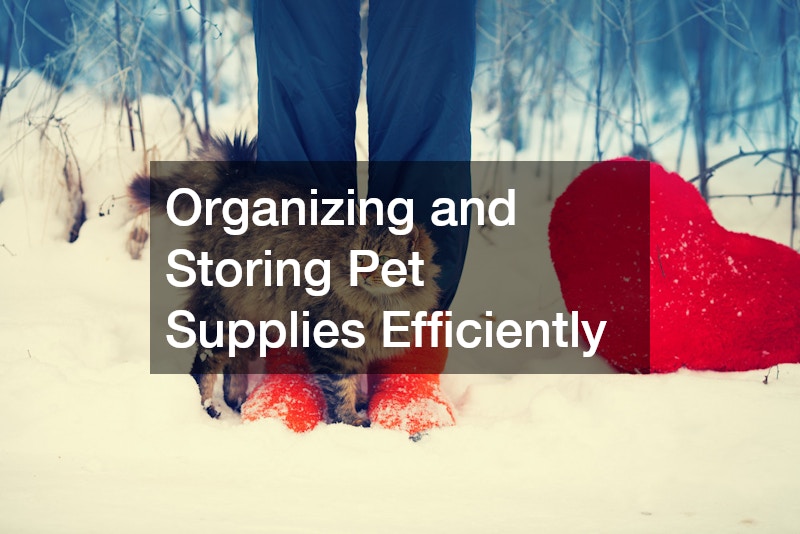Prioritizing Home Improvements
Maintaining a safe and healthy environment for pets is essential for their overall well-being. Pets, much like humans, require clean, comfortable, and safe living spaces to thrive. However, many pet owners may not realize the extent to which their home’s setup can affect their pets’ health. By taking steps to improve the home environment, pet owners can significantly boost simple pet health, leading to happier and healthier pets. Factors such as indoor air quality, the materials used in flooring, and the way pet areas are organized can all play a role in ensuring pets remain free from unnecessary health risks. Even small changes in how a home is managed and maintained can have lasting benefits, making it easier for pets to avoid allergens, toxins, and other hazards.

Creating a Pet-Friendly Living Environment
A pet-friendly home environment prioritizes the safety, comfort, and health of pets. This involves more than just providing a cozy bed or toys; it means assessing each part of the home to ensure it meets the needs of the pets living there. For example, clutter-free spaces allow pets to move around freely without the risk of injury, while secure windows and doors prevent them from escaping or getting hurt. Additionally, choosing non-toxic and durable materials for pet accessories helps reduce health risks. Homeowners can also focus on maintaining cleanliness to prevent the spread of germs and allergens, which can significantly impact simple pet health. Regular grooming areas and organized spaces dedicated to pet care routines can make a home more accommodating for pets, enhancing their overall well-being.
More specifically, incorporating dedicated dog washes into the home can be a practical way to maintain simple pet health. Frequent baths are essential for keeping dogs clean, especially after walks or outdoor play. A designated washing area, such as a small shower or tub in the laundry room, ensures that dogs are thoroughly cleaned without making a mess in other parts of the house.
Enhancing Indoor Air Quality for Pets
The quality of indoor air plays a crucial role in maintaining simple pet health, as pets are often more sensitive to air pollutants than humans. Dust, mold spores, and airborne chemicals can aggravate respiratory issues in pets, leading to discomfort and illness. Therefore, pet owners should focus on improving air quality by regularly vacuuming, using air purifiers, and keeping windows open for ventilation when possible. Choosing cleaning products that are free of harsh chemicals and regularly maintaining HVAC systems can further enhance air quality. These efforts not only benefit pets but also improve the overall health of everyone in the home, creating a more pleasant living environment.
One specific way to enhance indoor air quality is to ensure regular main drain cleanings, which can help prevent the growth of mold and bacteria in the home. When drains are clogged or not properly maintained, they can become breeding grounds for harmful microbes that affect air quality. This is especially important for homes with pets that might drink from or come into contact with drains.

Reducing Allergens in Common Pet Areas
Allergens can have a significant impact on simple pet health, especially for pets that are prone to allergies. Dust, pollen, mold, and even pet dander can accumulate in areas where pets spend a lot of their time, such as their sleeping spots, play areas, and feeding zones. To reduce allergens, it is essential to clean these spaces regularly, including washing pet bedding, vacuuming floors and furniture, and dusting surfaces. Additionally, choosing hypoallergenic materials for pet beds, toys, and bowls can help limit the accumulation of dust and other allergens. Maintaining a clean, allergen-free environment helps pets breathe easier and reduces the risk of allergic reactions, which can lead to more serious health problems over time.
A more specific approach to managing allergens is by incorporating healthy dog foods that promote better skin and coat health, which can, in turn, minimize shedding and dander production. Some dog foods are formulated with ingredients that improve the skin barrier, reducing the likelihood of dryness and irritation that can lead to excessive shedding. By feeding pets nutritious, high-quality food, pet owners can tackle one of the root causes of allergens in the home, leading to improved simple pet health.
Choosing Pet-Safe Flooring and Furniture
The type of flooring and furniture in a home can significantly impact simple pet health. Pet-safe flooring options, such as tile, laminate, or certain types of treated hardwood, are easier to clean and less likely to harbor allergens or bacteria. Additionally, avoiding materials that can easily scratch or absorb spills helps keep the environment sanitary, which is especially important in homes with multiple pets. Pet-safe furniture, made from durable and non-toxic materials, ensures that pets won’t be exposed to harmful chemicals. These considerations can help pet owners maintain a cleaner home while also extending the lifespan of their flooring and furniture.
Specifically, pet owners can consider setting up dedicated dog kennels in spaces with pet-friendly flooring. Dog kennels provide a safe, secure area where dogs can rest, play, or stay while their owners are away. Positioning these kennels on flooring that is easy to clean, such as tile or vinyl, simplifies the process of maintaining hygiene. It also prevents damage to other surfaces in the home, ensuring that dogs have a comfortable and safe space.

Incorporating Healthy Plants for Pets
Introducing indoor plants can be a great way to improve simple pet health, as certain plants can help purify the air, reduce stress, and add a touch of nature to the living space. However, pet owners need to be cautious about the types of plants they bring into their homes, as some can be toxic to pets. Selecting non-toxic, pet-friendly plants such as spider plants, bamboo palms, and Boston ferns can enhance the environment without posing a risk. Additionally, placing these plants in areas where pets cannot easily chew or knock them over can prevent potential accidents. Healthy plants can provide a calming effect, creating a more soothing home atmosphere for pets and their owners.
Pet owners should also consider regular visits to pet groomers to ensure their pets are clean and well-maintained, which complements the benefits of having healthy plants at home. Groomers can help manage shedding, reduce the buildup of allergens, and address any skin conditions that might be aggravated by environmental factors.
Ensuring Proper Ventilation in Pet Spaces
Proper ventilation is crucial for maintaining simple pet health, as pets rely on clean, fresh air to stay healthy. Ensuring that areas where pets spend most of their time are well-ventilated helps reduce the buildup of dust, odors, and airborne pathogens. This can be particularly important in spaces such as pet rooms, crates, or sleeping areas, where air circulation might be limited. Regularly opening windows, using fans, or installing air purifiers can improve ventilation and create a fresher environment. Additionally, clean ventilation systems can minimize the risk of respiratory issues, which is vital for pets that are sensitive to environmental changes.
In more specific settings, such as during pet boarding, ensuring proper ventilation is essential to maintaining a healthy environment for all animals present. Boarding facilities must prioritize air quality to reduce the spread of illnesses among pets, especially when housing multiple animals in a confined area. Pet owners can apply the same principles at home by making sure their pets’ crates or designated areas are well-ventilated and by scheduling regular HVAC maintenance to keep air circulation systems in good working condition.

Organizing and Storing Pet Supplies Efficiently
An organized home contributes to simple pet health by reducing stress for both pets and their owners. Properly storing pet supplies, such as food, grooming tools, toys, and medications, can prevent clutter and make it easier to maintain a clean environment. Designated storage areas for each type of pet item help keep things accessible while also ensuring that supplies are kept in optimal conditions. For example, storing pet food in airtight containers reduces the risk of contamination, while keeping grooming tools neatly organized prevents the spread of germs.
When arranging these storage areas, using appropriate floor covering materials can help in keeping the space easy to clean. Durable, water-resistant floor coverings like vinyl or rubber mats can be placed in areas where pet supplies are kept, such as near feeding stations or storage cabinets. These coverings can protect the floor from spills, scratches, and dirt, making it easier to clean up after pets.
Managing Pet Waste for a Cleaner Home
Effective pet waste management is essential for maintaining a clean home environment and ensuring simple pet health. Regularly cleaning up after pets, whether it involves litter boxes, backyard areas, or designated potty spots, helps prevent unpleasant odors and the spread of bacteria. This practice is particularly important in households with multiple pets, as accumulated waste can quickly lead to unsanitary conditions. Pet owners should also consider setting up specific areas for waste disposal and maintaining a consistent cleaning routine to ensure these areas remain sanitary. Proper waste management is a simple but vital step in creating a healthier living environment for both pets and humans.
For a more durable and sanitary solution, pet owners might consult with a flooring contractor to install pet-friendly flooring that is resistant to stains and easy to clean. Options like sealed hardwood, tile, or luxury vinyl can make it simpler to manage pet accidents and spills. These flooring materials are not only practical but can also reduce the buildup of bacteria and odors associated with pet waste.
Using Non-Toxic Cleaning Products Around Pets
Cleaning products play a significant role in maintaining a healthy home environment, but many standard cleaning agents contain harsh chemicals that can be harmful to pets. Using non-toxic, pet-safe cleaning products is essential for supporting simple pet health, as pets are often more vulnerable to toxins due to their proximity to floors and surfaces. Non-toxic products reduce the risk of respiratory issues, skin irritations, and accidental ingestion. Opting for natural cleaners that are free from bleach, ammonia, and synthetic fragrances ensures that the home stays clean without compromising the safety of pets.
When selecting flooring and considering maintenance, consulting a tile contractor can help pet owners choose surfaces that are easy to clean and safe for pets. Tiles made from materials that do not absorb spills or hold onto odors can simplify the cleaning process and allow for the use of non-toxic cleaners. Additionally, certain types of tiles can resist scratches, making them ideal for homes with active pets.
Providing Comfortable Resting Areas for Pets
Creating comfortable resting areas for pets is crucial for their overall well-being and supports simple pet health. Pets need designated spots where they can relax and feel safe, especially during times when they need to rest or recover from physical activities. Choosing the right bedding, such as orthopedic beds for older pets or cozy blankets for smaller animals, ensures that they have the support and warmth they need. These areas should be placed in quiet, draft-free parts of the home, allowing pets to rest without disturbances. A well-thought-out resting area can also help reduce anxiety in pets by giving them a consistent space to call their own.
Selecting the right flooring material for these areas can further enhance comfort. Wood flooring, for instance, is not only aesthetically pleasing but can also be pet-friendly if properly treated. It is easy to clean, which makes it easier to manage pet hair and dirt. Adding a few non-slip rugs over wood flooring can create cozy resting spots that are both comfortable and safe for pets.
Maintaining Pet-Friendly Change.
Enhancing your home to support simple pet health is an ongoing process that can have lasting benefits for both pets and their owners. Small changes, such as using pet-safe cleaning products, improving air quality, and organizing pet supplies, can create a healthier and more comfortable living environment. By paying attention to the materials used in flooring, furniture, and even cleaning agents, pet owners can reduce the risks of allergens, toxins, and other hazards that may affect their pets. Additionally, providing safe and comfortable spaces for rest, play, and grooming ensures that pets can enjoy their time at home without unnecessary stress.



